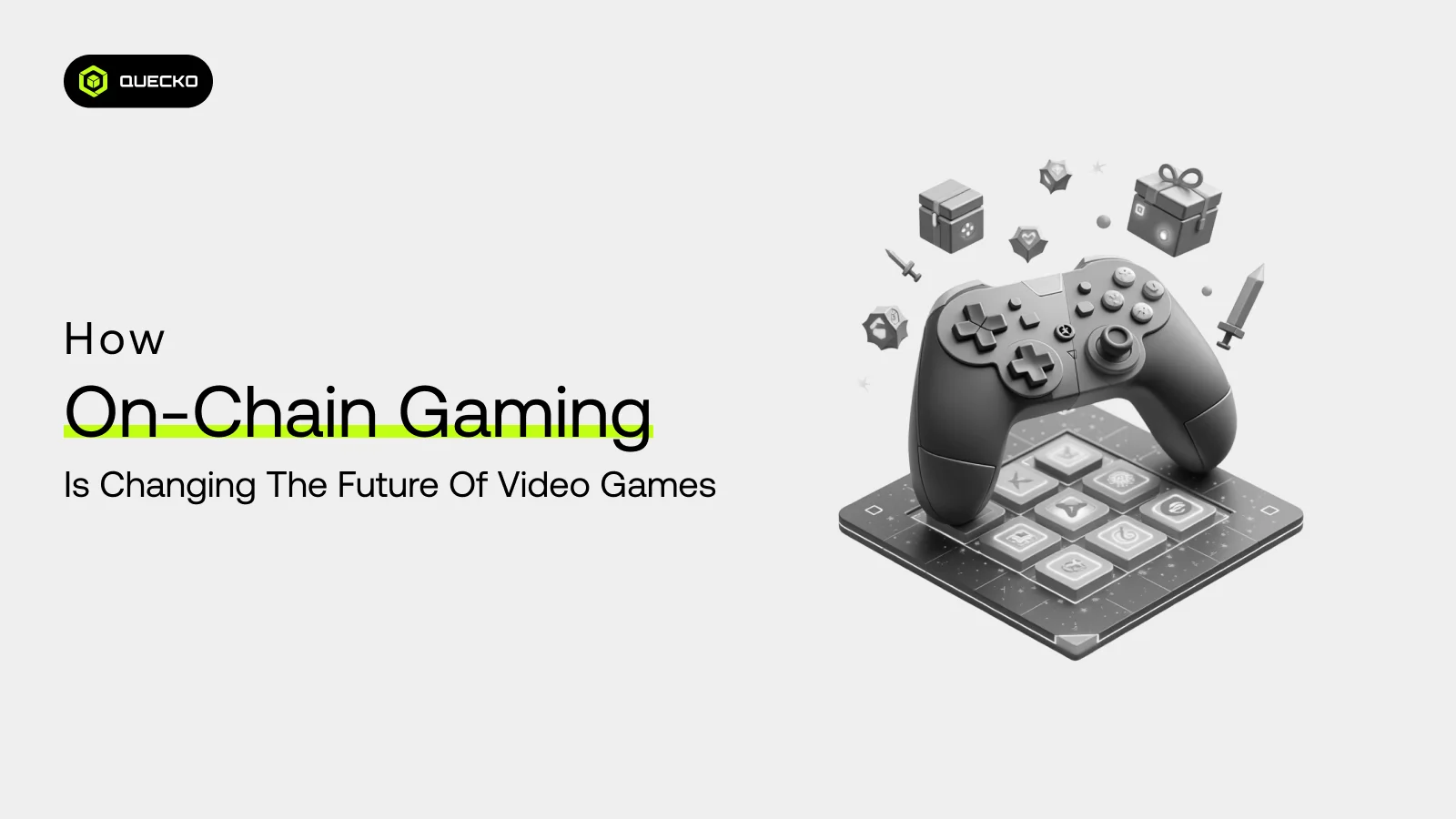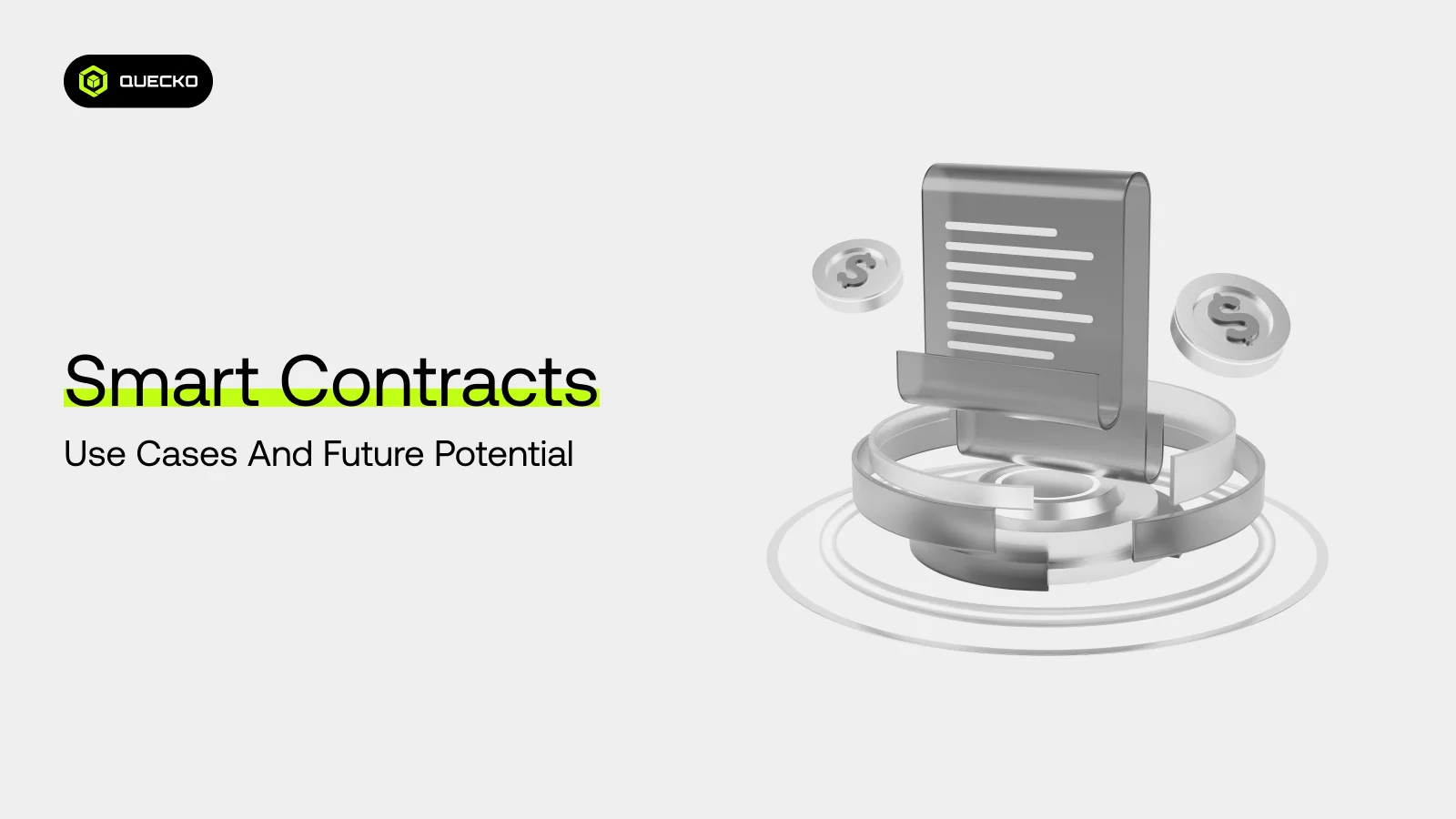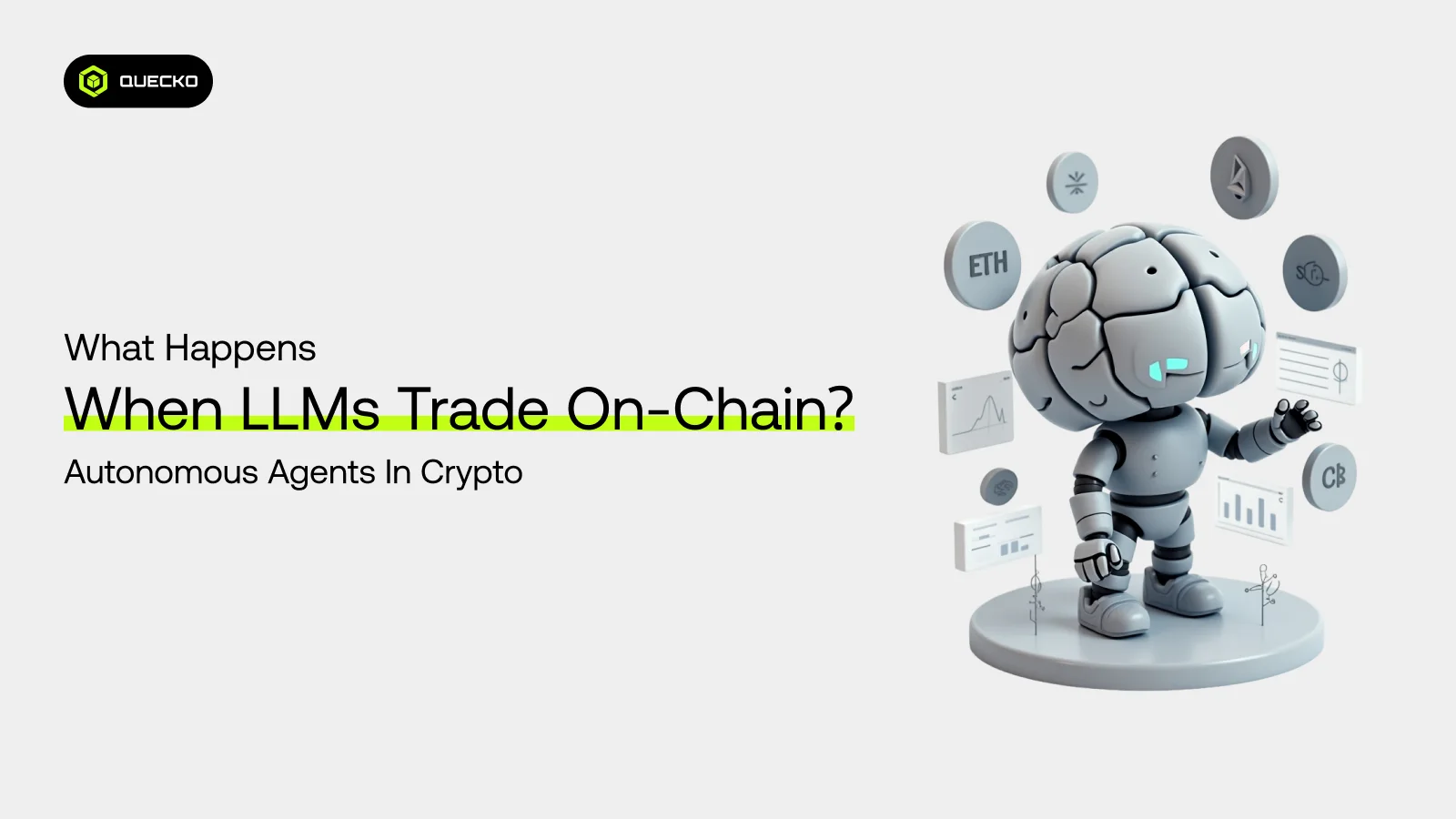How On-Chain Gaming Is Changing the Future of Video Games
Discover how on-chain gaming is revolutionizing the video game industry by enhancing ownership, transparency, and player empowerment. Explore the future of gaming with blockchain technology.

Welcome to the frontier of gaming innovation, where blockchain technology is revolutionizing how players interact with virtual worlds. “How On-Chain Gaming Is Changing the Future of Video Games” explores the emerging landscape of on-chain gaming— an era defined by decentralized ownership, true digital asset provenance, and new economic models that empower players like never before. As traditional game development evolves, blockchain gaming and web3 gaming are unlocking unprecedented possibilities, transforming game logic, gameplay, monetization, and community engagement. Fungible tokens and Crypto gaming are at the forefront of this revolution, enabling innovative ways for players to participate and benefit. Join us as we delve into how this groundbreaking approach is shaping the future of the gaming industry and redefining what it means to play.
What Is On-Chain Gaming?
On-chain gaming refers to the integration of blockchain technology into the development, operation, and ownership of video games. Unlike traditional gaming, where game assets, progress, and ownership are stored on centralized servers controlled by game developers or publishers, on-chain gaming leverages blockchain networks—such as Ethereum, Binance Smart Chain, or Solana—to create a decentralized and transparent gaming ecosystem.
Key Features of On-Chain Gaming:
- Decentralized Ownership:
In on-chain games, digital assets like characters, items, skins, and land are represented as non-fungible tokens (NFTs) or other blockchain-based tokens. This means players truly own their in-game assets, which are stored securely on the blockchain, allowing for transfer, sale, or trade outside the game environment.
- Immutable and Transparent Records in Game Development and Web3 Gaming:
All transactions, asset creation, and modifications are recorded on the blockchain, ensuring transparency and immutability in Web3 Gaming, crypto gaming, and decentralized gaming. This architecture supports on-chain games by allowing players and developers to verify the authenticity and provenance of assets at any time, fostering trust and security in game development within the blockchain ecosystem.
- Interoperability: Because assets are tokenized on standardized blockchain protocols like the Ethereum blockchain, they can often be used across multiple games or platforms that support the same standards, fostering a broader ecosystem of interoperable assets. This enables features in on-chain games such as Dark Forest, and the use of governance tokens, which can be leveraged for various monetization strategies across different environments.
- Player-Driven Economy:
On-chain gaming enables player-driven economies, where players can earn, trade, and sell assets in open marketplaces. This can turn gaming into a source of income, exemplified by play-to-earn models - Smart Contracts and Automation:
Smart contracts automate game mechanics, such as quests, battles, or asset exchanges, ensuring fair play and reducing reliance on centralized authorities.
Benefits of On-Chain Gaming:
- True Digital Ownership: Players have control over their assets, such as virtual land and digital identities, without fear of loss due to server shutdowns or developer decisions. This empowers the creation of autonomous worlds and fully onchain games where assets are truly theirs.
- Enhanced Security: Blockchain’s cryptographic security minimizes hacking and fraud risks, ensuring the safety of digital identities, virtual land, and other assets within various game genres.
- Economic Incentives: Players can monetize their gameplay through asset sales, virtual land trading, or rewards, fostering vibrant economies within autonomous worlds and fully onchain games.
- Innovation and Creativity: Developers can craft new game genres, gameplay mechanics, and assets—enabled by blockchain features—leading to more dynamic and creative gaming experiences in decentralized, autonomous worlds.
Challenges and Considerations:
- Scalability: Blockchain networks may face limitations in transaction speed and cost, impacting gaming experiences.
- User Experience: Interacting with blockchain wallets and managing private keys can be complex for newcomers.
- Regulatory Uncertainty: The legal landscape for blockchain assets and play-to-earn models continues to evolve.
- Environmental Concerns: Some blockchains have high energy consumption, although newer, eco-friendly protocols are emerging.
In short, on-chain gaming blends the immersive worlds of video games with blockchain’s transparency, security, and decentralization. It empowers players with true ownership of digital assets, fosters economic opportunities, and opens new avenues for innovation in the gaming industry. As technology advances, on-chain gaming is poised to reshape how players interact with digital worlds and assets.
Key Ways On-Chain Gaming Is Changing the Industry
-
True Ownership of Digital Assets:
In traditional games, in-game items are essentially owned by the game developers. Players buy, earn, or trade assets, but they don’t truly own them. On-chain gaming flips this dynamic by granting players ownership rights secured by blockchain tokens (NFTs). This means players can buy, sell, or trade assets across different platforms and games, creating a genuine digital economy.
-
Interoperability and Cross-Game Assets
One of the most exciting prospects of on-chain gaming is interoperability. Assets like characters, skins, or weapons can potentially be used across multiple games if built on compatible blockchain standards. This opens up a universe of possibilities, allowing players to carry their prized possessions wherever they go, blurring the lines between separate gaming worlds.
3. Play-to-Earn (P2E) Economies
On-chain games often incorporate play-to-earn models, enabling players to monetize their time and skills. Whether by earning rare NFTs or cryptocurrency rewards, players are incentivized to engage more deeply. This democratizes income opportunities, turning gaming into a viable livelihood for some and creating vibrant in-game economies.
4. Enhanced Security and Transparency
Blockchain’s decentralized nature ensures that game data and transactions are transparent and tamper-proof. Fully onchain games leverage this technology to enhance security and trust. Cheating, hacking, or unauthorized asset duplication becomes significantly more difficult, fostering fairer gameplay environments. Additionally, players can verify the scarcity and provenance of their assets through onchain statistics, boosting trust.
-
Decentralized Governance and Community Involvement
Many on-chain games incorporate decentralized autonomous organizations (DAOs), allowing players to participate in decision-making processes. This community-driven approach ensures that game evolution aligns with player preferences, fostering loyalty and engagement.
Challenges and Future Outlook of On-Chain Gaming
On-chain gaming, also known as blockchain gaming or crypto gaming, leverages blockchain technology to enable decentralized, transparent, and player-owned digital assets and ecosystems. By integrating blockchain, these games aim to revolutionize traditional gaming models through features like true ownership of in-game assets, interoperability, and decentralized economies. However, despite its promising potential, on-chain gaming faces several challenges that impact its widespread adoption and future development.
Challenges of On-Chain Gaming
- Scalability and Network Congestion
Blockchain networks, especially early and popular ones like Ethereum, often experience scalability issues. High transaction volumes lead to network congestion, resulting in slow processing times and elevated transaction fees (gas costs). This hampers seamless gameplay, especially in real-time or high-frequency games, limiting user experience and scalability. - High Transaction Costs
The cost of executing transactions on blockchain platforms can be prohibitively high, particularly during peak network activity. This makes microtransactions, common in gaming, less feasible and can deter players from engaging with fully onchain games or performing frequent trades. As a result, onchain gaming faces challenges in providing seamless and affordable experiences for users. - User Experience and Accessibility
Blockchain technology introduces complexities such as managing private keys, understanding wallet interfaces, and navigating decentralized systems. These barriers can be intimidating for non-technical gamers, impeding mainstream adoption. Moreover, onboarding processes are often cumbersome compared to traditional gaming platforms. - Interoperability and Standardization
While blockchain enables asset portability across games, the lack of standardized protocols and interoperability frameworks poses a challenge. Different games may use incompatible standards, making it difficult for assets to move seamlessly across diverse gaming ecosystems. - Security and Fraud Risks
Blockchain and crypto assets are attractive targets for malicious attacks. Hacks, scams, and exploits can lead to loss of assets and erode trust. Additionally, vulnerabilities in smart contracts can be exploited, risking player assets and undermining confidence in on-chain games. - Legal and Regulatory Uncertainty
Regulatory landscapes around cryptocurrencies and blockchain gaming are evolving. Issues like asset ownership rights, taxation, anti-money laundering laws, and gambling regulations can complicate development and deployment, creating legal risks for developers and players. - Economic Design and Sustainability
Designing balanced in-game economies that prevent inflation, manipulation, or economic collapse remains complex. Poorly designed tokenomics can lead to hyperinflation of in-game currencies or speculative bubbles, threatening long-term sustainability.
Future Outlook of On-Chain Gaming
Despite these challenges, the future of on-chain gaming holds significant promise, driven by technological advancements, increasing mainstream interest, and innovative business models.
- Layer 2 Solutions and Scaling Technologies
Emerging Layer 2 solutions (e.g., Polygon, Immutable X, Optimism) aim to alleviate scalability issues by conducting transactions off the main chain. These solutions promise lower fees, faster processing, and improved user experience, facilitating more complex and real-time games. - Standardization and Interoperability Frameworks
Efforts are underway to develop universal standards (such as ERC-721, ERC-1155, and upcoming interoperability protocols) that promote asset portability across multiple games and platforms, fostering a more interconnected ecosystem. - Mainstream Adoption and Institutional Interest
As user-friendly interfaces improve and awareness grows, more gamers are expected to embrace blockchain gaming. Major gaming companies and investors are increasingly exploring blockchain integrations, which could accelerate mainstream acceptance. - Innovative Business Models Play-to-earn (P2E), NFT-based ownership, and decentralized autonomous organizations (DAOs) are reshaping monetization and governance. These models incentivize player engagement and community participation, creating sustainable ecosystems.
- Enhanced Security Measures
Advances in smart contract auditing, multi-signature wallets, and decentralized security protocols will reduce vulnerabilities and build trust among players and developers. - Legal Clarity and Regulatory Frameworks As governments and regulators develop clearer policies, the legal environment for blockchain gaming will become more defined. This clarity will encourage legitimate, compliant development and operation of on-chain games.
Conclusion
On-chain gaming is poised to revolutionize the future of the video game industry by fundamentally transforming how players engage with digital entertainment. By leveraging blockchain technology, on-chain games introduce unprecedented levels of transparency, ownership, and decentralization, empowering players to truly own their in-game assets, trade freely, and participate in governance mechanisms. This paradigm shift fosters a more democratized gaming ecosystem, reducing reliance on centralized publishers and enabling innovative monetization models such as play-to-earn, which can incentivize player retention and economic participation.
Furthermore, on-chain gaming promotes interoperability, allowing assets and data to transcend individual titles and platforms, thereby creating a more interconnected gaming universe. The integration of decentralized economies also opens new revenue streams and community-driven development opportunities, encouraging deeper engagement and collaboration among players and developers alike. As blockchain infrastructure continues to mature and adoption widens, we can expect on-chain gaming to catalyze a fairer, transparent, and player-centric industry. Ultimately, this evolution not only enhances the gaming experience but also redefines the relationship between players, developers, and the digital assets they create and cherish, heralding a new era of innovation and empowerment in the world of video games.
Date
3 days agoShare on
Related Blogs

How On-Chain Gaming Is Changing the Future of Video Games
3 days ago

Smart Contracts: Use Cases and Future Potential
5 days ago

What Happens When LLMs Trade On-Chain? Autonomous Agents in Crypto
8 days ago

Behind the Gas Fees: What Happens During a Congested Block?
16 days ago







